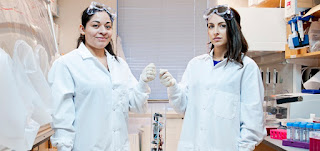The world plans to inject needles into a few billion upper arm muscles to save itself from the coronavirus. Why needles? Why can’t the vaccine be given orally like medicine, or glued on like a nicotine patch? In my childhood, we were warned that a dog bite would require fourteen abdominal injections. (The reason why many of my friends and I are not dog lovers). In fact, there is a word – trypanophobia meaning fear of needles. It is estimated that up to 10% of people may be so afraid of needles as to refuse to take injections.
*****
Hypodermic literally means under the skin. Hypodermic
needles have a long history.
Christopher Wren, a British architect (note: not a
doctor), used a cut-down technique to intravenously inject dogs in 1656. By
1660, the experiment was tried on human beings. The experiments proved fatal
for the recipients. There was no knowledge about the required dosage, or sterilizing
utensils. The method was abandoned for almost 200 years after that. In the
nineteenth century, metal syringes were used. Sherlock Holmes used them to
self-administer cocaine. In 1946, an all-glass syringe was developed, and in
1956, a disposable syringe. Plastic syringes with metal needles became the norm.
After AIDS, disposable needles became a necessity.
*****
There are a few successful oral vaccines such as the
polio vaccine. Easy to administer, their acceptance rate is higher. They can’t
accidentally injure someone with needles. Storage and distribution are not a
problem, no cold chain is required. Imagine how efficient the covid oral
vaccine distribution would have been. A sweet pill couriered to you, no freezers,
no queues, no nurses. They are also environment friendly. Every year nearly
half a billion needles are thrown in landfills; in 2021, this number will
exceed a billion. Annually, 75 million of the discarded needles are infected
with blood-borne diseases.
*****
Our bodies have several natural barriers: hair in the
nose, wax in the ears, acid in our bellies. Destructive chemicals and cells in
our immune system are for our protection. Vaccinations need to bypass these
barriers, while keeping the vaccines’ delicate components intact. Pfizer and
Moderna vaccines contain RNA, which is so sensitive that vials need to be deep frozen,
Pfizer in temperatures below winters in Antarctica. An injection into the upper
arm ensures our cells can respond to the RNA before that genetic material degrades.
Fatty areas don’t have enough blood supply. Traditionally
the buttocks were thought to be the right location for inoculation. (Imagine
presidents and prime ministers taking down their pants on TV for the shots).
But layers of fat don’t contain the appropriate cells to initiate an immune response.
Antigens may also become defunct if they remain in fat for long. Research has
indicated thicker skinfolds evoke a lowered antibody response to vaccines.
Scientists suggest the length and diameter of the needle should be customized to
each patient. That may be the most impractical suggestion for the covid
vaccines.
*****
Oral vaccines are challenging because of the highly
acidic GI (gastro-intestinal) environment in the stomach. The enzymes in the GI
tract can degrade the fragile antigenic proteins before they can induce an
immune response. Which means a higher dose of antigen is needed for an immune
response as compared to the shots in the arm. Larger doses increase the risk of
higher tolerance to the dose rather than protection. Oral vaccines are a real
challenge, particularly for a new epidemic like covid.
The University of Sydney tried to use a liquid jet
injector. Other attempts include a Band-Aid like patch made of 400
microneedles, a nasal spray vaccine and an oral tablet. None of them seem
likely to succeed before the end of the pandemic.
*****
The hypodermic needle, manufactured in billions, may
be the greatest medical device invented. Whether we like it or not, it
continues to be mankind’s main weapon to save lives.
Ravi







